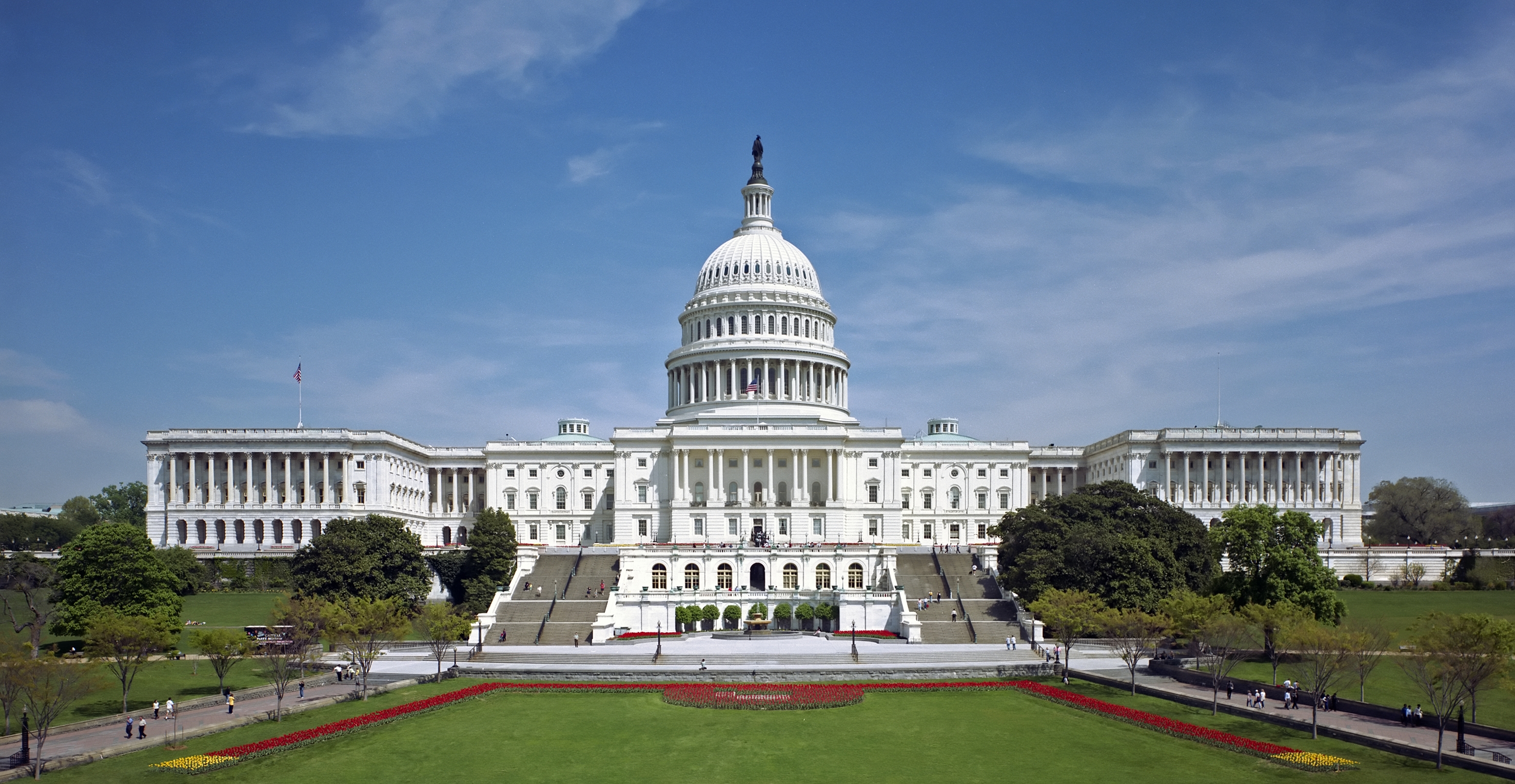-
Disagree This question - will US wellbeing inequality increase under Trump compared to its level now - is very difficult to predict due to the many and various drivers of wellbeing that the Trump administration's being situated in power per se, and policies, may affect. As regards the "being situated in power" part, since the majority of the US voting population that turned out to vote appears to have supported Trump out of the available options, and so have now gotten what they wanted, this may feed into hope for those people, which should lift wellbeing. Many of those who voted against Trump are in the upper income and status brackets, where we should generally expect higher levels of wellbeing than amongst other brackets, so if their wellbeing were to fall due to disappointment with the election result (or, to hear some talk, possibly even existential grief), then that would logically feed into a decrease in wellbeing inequality. As regards the effects of policies, under Trump I expect deregulation, increased law enforcement, and an attempt to combat existing entrenched power networks, but also a huge amount of internal tension and political warfare of various sorts. What ultimately comes of the Trump administration's attempts to enact real reform over the next four years is anyone's guess. If he were successful in achieving all the changes he is proposing, i would predict an eventual modest decrease in wellbeing inequality (e.g., via low-wellbeing illegal immigrants being expelled from the country, low-wellbeing low-health people being more effectively helped than they are now via Big Pharma profit-seeking rather than health-promoting approaches, raising the wellbeing of everyday people by explicitly moving away from woke policies, such as better protecting women and girls through explicitly preventing biological males from competing in women's sports, and lowering the wellbeing of presently high-wellbeing entrenched bureaucrats through lowering their status, by cutting their jobs). However, i don't see there's any chance he will achieve everything he is setting out to do, and even if he did, the changes would take a while and some of the flow-on effects to wellbeing of reformed institutions, such as in the health arena, would take a while to manifest..
Professor Gigi Foster
Professor, School of Economics, UNSW School of Economics -
Disagree The best measure of quality of life in nations is how long and happy people live, which is measured by the index of Happy Life Years (HLY) also referred to as Wellby's. Inequality of HLY in nations is going down, in spite of rise of inequality in some conditions, such as income. This long term trend results from structural societal development. The present swing of the political pendulum to the right wil not reverse that trend, but may slow it down a bit
Professor Ruut Veenhoven
Professor of Sociology, Erasmus University Rotterdam -
Neither agree nor disagree I don't think there's a reliable way to know what will happen to the distribution of (underlying) wellbeing, or even just to the distribution of *self-reported* well-being. For example, to the extent that relative income is an underlying determinant of reported wellbeing then, on the one hand, increasing income inequalities could widen the wellbeing distribution, but on the other hand the candidate(s) of choice for lower-income, lower-education individuals having been elected could increase wellbeing at the bottom, narrowing the wellbeing distribution. As an aside, one worry in this context is that we have evidence (e.g., Deaton, 2012) that asking political questions before eliciting self-reported well-being could have a dramatic effect on responses; so we'll have to be careful when designing such surveys.
Professor Ori Heffetz
Associate Professor of Economics, Cornell University and Hebrew University -
Agree More "radical" Trump policies likely exacerbate inequalities hence likely leading to more inequalities in the wellbeing distribution as well.
Professor Martin Binder
Professor of Socio-Economics at Bundeswehr University Munich -
Neither agree nor disagree This is a Very difficult question to answer unless you are very familiar with the policy position of the incoming Trump administration, and I am not. As a result, I do not believe I can provide an answer in one direction or the other.
Professor Mark Wooden
Professorial Research Fellow and Director of the HILDA Survey Project, Melbourne Institute: Applied Economic and Social Research, Faculty of Business and Economics, University of MelbourneHowever, I make three observations. First, as I understand it, the Trump administration is seeking to markedly reduce the size of the US federal government, which in turn could negatively impact on the quantity and quality of public services. Research to date, however, provides mixed results about the relationship between government size and population well-being. That said, positive relationships are usually found between wellbeing and specific types of government spending, and especially on health and social welfare, and since this type of spending impacts most heavily on the least well off, would likely have implications for the distribution of wellbeing. However, I have no idea whether the Trump administration is planning major cuts in health and / or social welfare. I believe though that he has stated that he will not seek to repeal the Affordable Care Act.
Second, it seems very clear that the Trump administration will increase tariffs, which will raise the price of imported goods and adversely affect economic growth. I would expect this to impact negatively on overall population well-being. However, if higher tariffs reduce income inequality (as found by Rojas-Vallejos & Turnovsky, 'Tariff reduction and income inequality: Some empirical evidence', Open Economies Review, 2017), it may be that inequality in wellbeing will also be reduced. That said, the link between international trade and income inequality is contentious. Further, even if there is an association, I suspect that any consequences for the distribution of population wellbeing would be very small.
Third, most people are very resilient and thus individual wellbeing trends to be very stable over time. Thus, for policy changes to have any marked effect on wellbeing they would likely need to be very large.
-
Agree The wellbeing distribution has been widening over the past decade in the US, as it has in many countries. This widening has been linked, likely in both causal directions, to increasing political polarization, and to the narrowing and specializing of information networks. The recent US election is one of many where these changes have been playing out.
Professor John Helliwell
Professor Emeritus of Economics, University of British Columbia -
Completely disagree Over the past decade, life evaluations in the United States have remained remarkably stable in both level and distribution, making significant changes unlikely in the near future. Moreover, there is no consistent evidence that the first Trump administration has caused a decline in national well-being or an increase in well-being inequality, although some groups may have experienced different effects. As a result, I believe that Trump's presidency alone is unlikely to have a significant impact on overall well-being in the United States in the absence of significant exogenous influences.
Professor Mohsen Joshanloo
Associate Professor (Psychology), Keimyung University, South Korea -
Neither agree nor disagree I do not see a compelling reason to expect a widening in the distribution of wellbeing, although several factors may influence the trend in different directions. Increasing political polarization, for example, could contribute to a broader distribution of wellbeing. Political polarization may directly affect wellbeing, but it could also influence levels of optimism, with the wellbeing of Democrats and Republicans diverging in opposing directions.
Professor Mariano Rojas
Professor of Economics, Universidad Popular Autónoma del Estado de PueblaPredicting the short- and mid-term economic consequences associated with the new administration’s policies is challenging. It is unclear how economic trends will evolve and what their ultimate effects will be on people's wellbeing. Similarly, it is difficult to foresee how various social issues, particularly those arising from the resolution of long-standing conservative-versus-liberal dilemmas, will impact wellbeing.
What does seem evident is the global rise in political polarization, with people increasingly receiving information from distinct, often conflicting sources, and holding sharply different perspectives on the world. However, it remains unclear—at least to me—how this growing polarization will ultimately affect people's wellbeing.
-
Agree The polarization of society will be mirrored in the distribution of wellbeing
Professor Ronnie Schob
Professor, School of Business and Economics, Freie Universitat Berlin -
Completely agree The Trump administration promises to adopt policies to protect the internal market, limit immigration, and reduce taxation with the ultimate - declared - goal of promoting the American economy. These policies will likely increase well-being inequality within US for at least three reasons: first, they will likely reduce the American average purchasing power; second, they will affect the quality and quantity of the public services; third, they won't improve the availability of non-economic drivers of well-being, such as social relations. In sum, I expect a polarization of the society, and further erosion of the American social fabric. A caveat: what I wrote might not hold if a major, unpredictable catastrophe takes place in the US. Under emergency - e.g. an existential threat - Americans' well-being might generally increase as a consequence of increased pride and national identity.
Doctor Francesco Sarracino
Economist, Research Division of the Statistical Office of Luxembourg -STATEC -
Disagree People who voted for Trump (and the Republicans) tend to be the disaffected, with currently low wellbeing. They may improve their wellbeing through the policies that are followed. By contrast, liberal people who voted for Harris (and the Democrats) tend to have higher wellbeing which may now fall with the policies to be implemented. Thus the distribution in wellbeing may narrow.
Professor Arthur Grimes
Chair of Wellbeing and Public Policy, School of Government, Victoria University of Wellington -
Agree It is not clear in detail what measures the Trump administration will really take, but an increase in tariffs and a cut-down on welfare policies seem to be sure to happen. Whether higher tariffs will save jobs is unclear, but they will very likely raise inflation, and the latter is more detrimental to the well-being of the poor than the rich (e.g., Welsch and Kühling 2015). The incidence of welfare policies is similar, so I expect a widening of the distribution of well-being across the income scale.
Professor Heinz Welsch
Professor of Economics, University of OldenburgReference: H. Welsch, J. Kühling (2015), Macroeconomic Preferences by Income and Education Level: Evidence from Subjective Well-Being Data, Review of Economics and Finance.
-
Disagree This is an important but very difficult question, requiring pure speculation as to the major changes that will happen in the US the next four years. At the moment, the US wellbeing distribution is already very wide, with both lots of happy and unhappy Americans. The question then boils down to whether either the whole country will become miserable (in which case the wellbeing distribution narrows at the bottom end), or more hopeful and social (in which case the wellbeing distribution narrows at the top), or even more wellbeing-polarised. My reading of the US political situation is that the Presidential team will find itself in near civil war with other parts of the government and politics, initially leading to even higher levels of chaos than already present, but eventually settling on a clearer direction for the country as a whole, which would then lead to more hope. I do not know what that clearer direction will be as it will depend on which political factions become dominant, but I do suspect the fight will be decided within four years, thus spawning an upward trajectory before the end of the four years.
Professor Paul Frijters
Professorial Research Fellow, CEP Wellbeing Programme, London School of Economics -
Neither agree nor disagree Predicting whether the distribution of well-being in the USA will widen under the new administration is inherently uncertain due to the multifaceted and interdependent nature of well-being determinants. The administration’s policies are likely to introduce significant changes across numerous dimensions—economic, social, environmental, and health-related—which will interact in complex ways to influence subjective well-being (SWB).
Doctor Anthony Lepinteur
Research Scientist, University of LuxembourgEconomic policies, for instance, might benefit specific industries and regions, boosting employment and income for some while potentially increasing costs for others, thereby affecting different population groups unevenly. Changes to social policies, such as restrictions on certain rights or protections, may disproportionately impact marginalized groups, altering the distribution of well-being. Environmental policies could also have divergent effects—job creation in energy sectors might improve well-being for some, but environmental degradation could have broad, negative public health implications.
Well-being itself is multi-dimensional, encompassing economic security, health, social inclusion, and personal freedoms. Each of these dimensions will be affected differently, and the net effect depends on the magnitude and direction of these impacts, their interactions, and the weights individuals assign to them. Additionally, external factors such as global economic shifts or climate events will further complicate the landscape.
Anticipating the overall impact on the distribution of well-being would require exhaustive analysis of these dimensions, accurate weighting of their contributions to SWB, and a dynamic understanding of their interplay. Given the scope and uncertainty of these factors, it is impossible to confidently predict whether the distribution of well-being will widen, narrow, or remain stable.
-
Agree The more Donald Trump leads the news, the more identities tend to polarize, and grievances and fears become exaggerated. Fractured social cohesion looms large in possible drivers of reduced life satisfaction. Because the USA has a middle/high average life satisfaction now (on a constrained scale), reducing everyone's will tend to widen the distribution. Another reason we might expect the less well-off to do worse over four years relates to the possibility of severe health misinformation once again affecting those with less education and food/medical budgets.
Professor Chris Barrington-Leigh
Professor, McGill UniversityOn the flip side, the social/ideological polarization may have peaked already, and overblown fears about the new administration may relax somewhat in the face of reality. In addition, those with current lower wellbeing may be more resilient to the identity-related impacts.
-
Completely agree I expect further polarisation of ideas and consensus on government policies after Trump election
Professor Leonardo Bechetti
Professor of Economics, University of Rome Tor Vergata -
Completely agree The country is polarized and any action by the Trump administration is likely to be welcomed by part of the population and be seen as adversarial by the opposing camp.
Professor Arie Kapteyn
Professor of Economics, University of Southern California -
Disagree The newly elected government will have to be seen to being paying back their supporters who are disproportionately in lower income brackets.
Professor Philip Morrison
Professor Emeritus, School of Geography, Environment and Earth Sciences Victoria University of Wellington (Te Herenga Waka) -
Neither agree nor disagree In the short run average US wellbeing may have increased, ~50% voted for the winner, Trump. Too early to say what happens later. Depends on what Trump does in terms of tariffs and other anti-global market policies. There have been reports his proposed policies could increase US household costs by $US1000 to $US1500; would this 1 % to 2% increase be noticed given current inflation rates; 2%-3%? Probably not by the 70% of households who earn over $US46000-$76000 per year. However, the poor remainder earning less than $48,000 will feel these costs more. What Trump will do to help the poor is not clear at this time. Another area for wellbeing changes is in Trump's proposed shakeup of Federal Government Departments, those who think their jobs are at risk will certainly be unhappy; we will just have to wait and see how many are affected.
Doctor Tony Beatton
Visiting Fellow, Queensland University of Technology (QUT) -
Completely disagree I justify my disagreement with this statement by referring to the following facts: 1. women will suffer more, since Trump's electorate and even influencers are more male and sexist; 2. ethnic minorities will suffer more since hate speech will spread, as experienced in the former Trump election; 3. a reduction in public services, as will likely happen under the administration of Elon Musk (named co-leader of the Department of Government Efficiency), will hit the poor hardest; 4. inflation, due to higher tariffs on imports, will again mainly affect the poor; 5. political opposition will have a harder personal life, as demonstrated during the election campaign. The only compensating factor could be if the future well-being of Americans under the new administration is compared to the counterfactual scenario of a Democratic administration, because in the latter case social conflicts could have risky consequences for democracy.
Professor Maurizio Pugno
Full Professor of Economics, University of Cassino -
Agree There is an increase political polarization at least in Europe and USA and the election campaign in the US of a consequence of this. Thus yes, I think there will be a widening in the distribution of wellbeing in many countries. The results of the US elections have legitimated and probably accelerated decisions such as Walmart abandoning the DEI policy, but it is not clear that this was not going to happen anyway. With social polarization, one would expect an increase in the wellbeing gap. For example, the more polarized opinions are, the larger the impact of any political decision on detractors of the policy.
Professor Ada Ferrer-i-Carbonell
Professor of Economics, IAE-CSIC -
Completely agree I agree largely because there has been a long term trend of increasing income inequality, and likely well-being inequality in the U.S. Additionally, perceptions have become increasingly polarized over time, which alone will widen feelings of well-being. What is more debatable is the impact of one president, on the economy for instance. I believe presidents tend to have a larger immediate influence on foreign than domestic affairs. However, this administration is different. Typical presidents are not so disruptive to trade and immigration policies, which will have a domestic impact. This administration also has a majority in Congress, meaning their legislative agenda, domestic and foreign, will be more effective. The impact of these policies is even more debatable. What we know clearly from the evidence is that income inequality is bad for well-being (except in a limited number of cases), jobs are good, inflation is bad, and a more generous social safety net is good.
Doctor Kelsey J O'Connor
Researcher in the Economics of Well-being -
Neither agree nor disagree Electoral fate of incumbent governments goes hand in hand with the happiness of the people.Voters with low well-being may be more inclined to support political candidates who promise significant change (Ward, 2019). Therefore, if low well-being predicts voting for a president promising change, it may indicate that a substantial portion of Americans have relatively low well-being. In other words, the "initial conditions" suggest that even though, macroeconomic indicators such economic growth and unemployment rate will improve during Trump's presidency, these changes do not necessarily enhance subjective well-being across all segments of the U.S. population. The administration's promised policies and political events can have divisive effects on well-being.
Professor Daniela Andrén
Senior Lecturer, Örebro University School of BusinessWard, G. (2019). Happiness and Voting: Evidence from Four Decades of Elections in Europe. American Journal of Political Science, 63(3), 548–564.
-
Neither agree nor disagree There are several measures of well-being distribution (see McCanny et al., 2023). Imagine that we choose the standard Gini coefficient. It assesses “the distance from a society where resources are equally distributed” (p.2). Now, please think in a scale of life satisfaction (as a measure of well-being) with a range from 0 (the worse level of well-being) to10 (the highest level of well-being). Personally, I value strongly more equal societies. Unfortunately, it is very difficult to predict changes in income distributions. And even more difficult, is to predict what will happen in the US during the coming 4 years under the new administration of the president Trump. My intuition is that the distribution of well-being will became more unequal. In other words, it will increase the number of people in bottom part of the life satisfaction distribution (0-4). Why? President Trump as announces stronger polices against the immigrants. In addition, probably, the trust in the government will decrease and the perception of corruption will increase. Moreover, I guess that the perception of freedom will also de decrease. Trust, corruption and freedom are key predictors of well-being.
Professor Wenceslao Unanue
Associate Professor, Business School, Universidad Adolfo IbáñezReferences
McCanny, A., Panasiuk, S., & Cheung, F. (2023, April 19). Wellbeing Distributions: The Democratic Way to Measure Happiness. Retrieved from osf.io/hg2a8

In November 2024, members of the World Wellbeing Panel were asked for their views on two statements relating to the recent presidential elections in the USA, and the size of government.
The two statements were as follows:
Statement 1: There will be a widening in the distribution of wellbeing in the USA over the next four years under the new administration.
Statement 2: Most western democracies could provide their current levels of wellbeing with smaller governments.
Response options for each statement were: “completely agree”, “agree”, “neither agree nor disagree”, “disagree”, “completely disagree”.
Below are the distributions of these categorical responses, followed by a discussion. You can click where indicated to see respondents' detailed written comments.
There will be a widening in the distribution of wellbeing in the USA over the next four years under the new administration.
Most western democracies could provide their current levels of wellbeing with smaller governments.
-
Completely agree Oh yeah. I think we could get a LOT higher wellbeing with smaller government than we presently have, mainly because the large bureaucracies presently in charge of major wellbeing drivers like health, education, and social policies are making decisions not aligned with achieving high wellbeing in those areas, and i am fairly certain that effectively disseminating control over those areas would significantly increase wellbeing.
Professor Gigi Foster
Professor, School of Economics, UNSW School of Economics -
Disagree This depends on the quality of government, technical service delivery in particular. Big goverment (high tax) goes with more happy life years among nations where that quality is good and less among nations where the quality of government is poor
Professor Ruut Veenhoven
Professor of Sociology, Erasmus University Rotterdam -
Neither agree nor disagree In principle yes, almost by definition: unless most western democracies are right now exactly at the point of maximizing wellbeing---which I very much doubt they are---then in principle they must be able to provide their current levels of wellbeing with smaller governments. In practice, however, I do not believe we know how to do it (i.e., how to maximize wellbeing).
Professor Ori Heffetz
Associate Professor of Economics, Cornell University and Hebrew University -
Agree -
Professor Martin Binder
Professor of Socio-Economics at Bundeswehr University Munich -
Neither agree nor disagree As previously stated, research into the question of whether government size (as measured at least by its expenditure) is associated with population well-being has produced mixed findings. Bjørnskov et al. (2007) reported evidence of a negative relationship; Di Tella (2005) a positive but insignificant relationship; Hessami (2010) an inverse U-shaped relationship; and Flavin et al. (2014) a significant positive relationship. Based on this, admittedly cursory and selective review, I suggest we still do not know whether there is a relationship between government size and wellbeing or not (but of course I defer to others who are more familiar with this literature).
Professor Mark Wooden
Professorial Research Fellow and Director of the HILDA Survey Project, Melbourne Institute: Applied Economic and Social Research, Faculty of Business and Economics, University of MelbourneBut here follow three thoughts based on my own opinion. First, the efficiency with which government delivers services will matter more than the amount of expenditure. Second, population wellbeing will likely be affected by government expenditure on particular types of services (with health the most obvious example). Third, associations will vary across countries depending, for example, on current government spending, levels of trust in institutions, and so on.
References:
Bjørnskov, Christian, Axel Dreher and Justina A.V. Fischer (2007). The Bigger the Better? Evidence of the Effect of Government Size on Life Satisfaction Around the World, Public Choice. 130: 267–292.
Di Tella, Rafael, Robert J. MacCulloch and Andrew J. Oswald (2003). The Macroeconomics of Happiness, Review of Economics and Statistics. 85 (4): 809–27.
Flavin, P., Pacek, A.C. and Radcliff, B. (2014). Assessing the Impact of the Size and Scope of Government on Human Well-Being, Social Forces, 92(4): 1241–1258.
Hessami, Z., 2010. The size and composition of government spending in Europe and its impact on well‐being. Kyklos, 63(3): 346-382. -
Neither agree nor disagree What all countries need to provide is better government. Much of the increase in the size of employment in governments has been due to increasingly complicated administrative procedures. Most of these complications have been intended to deliver moire equity and to reduce risks, with a frequent unintended effect of making it moire difficult to introduce policy innovations designed to improve well-being. My favourite example is provided by the administrative roadblocks to getting school classes taught in elder care facilities, and that is but a single example.
Professor John Helliwell
Professor Emeritus of Economics, University of British Columbia -
Agree There does not appear to be a well-established body of longitudinal research on this question. However, my hunch is that reducing the size of government in a democratic context, when necessary and coupled with efficient allocation of the resulting freed-up budget, is unlikely to have negative effects in the long run.
Professor Mohsen Joshanloo
Associate Professor (Psychology), Keimyung University, South Korea -
Disagree There is always an argument for efficiency, both in the public and private sectors. However, I believe the primary issue here is not efficiency itself, but rather the appropriate mechanism for generating wellbeing within societies.
Professor Mariano Rojas
Professor of Economics, Universidad Popular Autónoma del Estado de PueblaThe argument in question suggests that by reducing the size of government—thereby expanding the role of markets in the allocation of resources, goods, and services—wellbeing would not only remain unaffected, but might even improve. I believe this broader perspective is at the heart of the debate over smaller governments. It represents a viewpoint that pits markets against mixed economies, and individualism against the sense of community.
In my view, an organization grounded in the market system and driven by individualistic principles is less effective at promoting wellbeing than one based on a mixed economy, sustained by values such as solidarity, altruism, communitarianism, and the importance of the public sphere. Wellbeing in society is better fostered by nurturing a sense of community, offering unconditional acceptance regardless of people's productivity or their innate and acquired skills, and cultivating a sense of belonging.
Wellbeing is better served when citizens are treated as people with inherent dignity, rather than as mere consumers or workers. It is better served by recognizing the personhood of every member of society, regardless of their circumstances at birth. Ultimately, wellbeing is best promoted by fostering a sense of shared destiny, walking together, hand in hand, toward the challenges and opportunities the future holds. In this context, sizable (and efficient) governments play a crucial role in creating an environment conducive to wellbeing—one that markets alone cannot provide. Of course, wellbeing research should aim to equip governments with better policy options to enhance wellbeing. We must begin by recognizing that the role of governments extends far beyond the mere promotion of economic growth.
-
Neither agree nor disagree I do not see a clear association between the size of the government and wellbeing and no clear causal relationship.
Professor Ronnie Schob
Professor, School of Business and Economics, Freie Universitat Berlin -
Neither agree nor disagree I don't understand what you mean with "smaller governments": do you mean smaller government expenditures? If so, I believe that public services are necessary for quality of life. We could definitely keep the current level of well-being unchanged with smaller Gross Domestic Products (GDP), but not with less public services: education, health care, and public resources such as water, energy and public infrastructure should be managed and provided by public institutions. (p.s. as I am not sure I got the question right, I chose "neither agree nor disagree").
Doctor Francesco Sarracino
Economist, Research Division of the Statistical Office of Luxembourg -STATEC -
Agree Many government bureaucracies have become bloated through increasing managerialism that has both increased the size of the bureaucracy and decreased its effectiveness. Reducing the size of the bureaucracy - if it leads to a reduction in managerialism - could enhance government effectiveness. However, if the cuts are to programmes that work to enhance wellbeing (rather than to ineffective bureaucrats) wellbeing of some groups may diminish. Hence, while I agree that most Western democracies could provide their current levels of wellbeing with smaller governments, it does not follow that smaller government will maintain current levels of wellbeing.
Professor Arthur Grimes
Chair of Wellbeing and Public Policy, School of Government, Victoria University of Wellington -
Neither agree nor disagree Smaller governments may mean less public goods and services or a more efficient provision of the latter. While there may be a potential for more government efficiency in most western democracies -- leading to higher well-being -- I am skeptical whether a reduction of state activity will lead to higher well-being even if accompanied by lower taxes. In particular, e.g., reduced welfare state generosity in Europe (e.g. in Denmark and Sweden) was associated with reduced well-being (Easterlin and O'Connor 2022).
Professor Heinz Welsch
Professor of Economics, University of OldenburgReference: Easterlin, R.A., O’Connor, K.J. (2022), Explaining Happiness Trends in Europe, Proceedings of the National Academy of Sciences 119, No. 37 e2210639119.
-
Completely agree For this statement, we can look at countries like Costa Rica nowadays and Australia in the 2000s, which had very high levels of wellbeing but much lower levels of absolute and relative government spending than you currently see in most European and other Western countries. So merely by 'going back' to these two best-practise examples, countries could increase their wellbeing with smaller government. Of course there are complicating factors (different countries and times have different challenges), but I still find these empirical counter-examples to the situation today persuasive about what is possible. How such improvements can be achieved is a topic too large to address here (but see https://global.oup.com/academic/product/a-handbook-for-wellbeing-policy-making-9780192896803 for ideas). Note that I here interpret 'levels of wellbeing' as the expected number of WELLBYs of a newborn in a country in a particular year, so combining life satisfaction and life expectancy (see https://www.nature.com/articles/s41599-024-03229-5 for methodology and tables of developments over time in different countries).
Professor Paul Frijters
Professorial Research Fellow, CEP Wellbeing Programme, London School of Economics -
Neither agree nor disagree I am not an expert on the relationship between government size and subjective well-being (SWB), nor am I aware of any convincing causal evidence on this topic. While various theoretical arguments exist—some suggesting smaller governments might improve efficiency and others highlighting the critical role of public services in supporting well-being—I cannot confidently assess the validity of this claim without robust empirical evidence. Speculating on such a complex issue without clear data would be misleading, so I prefer to refrain from giving a definitive response.
Doctor Anthony Lepinteur
Research Scientist, University of Luxembourg -
Agree Naturally, bureaucracies protect themselves somewhat, and managers value commanding large sets of resources, in addition to serving their primary objective which is related to the wellbeing of the population. Therefore, there is inevitably some inefficiency and disorganization due to self-interest. In addition, because the world is always changing and doing so ever faster, inertia always keeps a large wedge between the extant and the ideal management apparatus. Therefore, a mildly ruthless purge followed by an enlightened rebuild can always eliminate some slack or allow for rethinking of the structure and organization (with some pain to public servants and short-run morale but net benefit to the population). However, in practice it would be hard to have enough concentrated knowledge to be "enlightened" in this sense. Therefore, the statement is nearly tautologous in principle. And it is still probably true in practice.
Professor Chris Barrington-Leigh
Professor, McGill University -
Neither agree nor disagree Closer distance between administration and citizens enhances wellbeing but unions across states create economies of scale and reinforce monetary power...the right mix is strong decentralisation under the umbrella of a large union for monetary and fiscal policies
Professor Leonardo Bechetti
Professor of Economics, University of Rome Tor Vergata -
Disagree there is a fair amount of evidence that countries with an effective government and in particular strong safety nets show higher wellbeing. It is conceivable that a shrinking government would still be able to be effective and provide a strong safety net, but typically attempts at shrinking governments are not sufficiently targeted to achieve that.
Professor Arie Kapteyn
Professor of Economics, University of Southern California -
Completely disagree A growing proportion of the population is dependent on the redistribution policies of governments which will probably prevent government downsizing.
Professor Philip Morrison
Professor Emeritus, School of Geography, Environment and Earth Sciences Victoria University of Wellington (Te Herenga Waka) -
Neither agree nor disagree Depends, what Government delivers in terms of public goods. If the people agree with service delivery levels the size of Government probably doesn't matter, except perhaps for the laxity-worrying neoliberals who want balanced budgets. It is interesting that the highest level of trust in Government, and wellbeing, are in those countries that deliver more social welfare/ public goods e.g. the Nordic countries, Germany, Australia, New Zealand, etc. US Trust in Government has tanked at around 21% versus 61% in Australia. Calhoun, Gaonkar & Taylor (2022) suggest the issue in the US is that the loss of political efficacy, ability to make change, of the citizens. Successive US Federal Governments have not been delivering what they promised the people, especially public goods to help with healthcare (US citizens are dying earlier), and to mitigate job loss, community degradation etc. arising from big corporates/multinationals move of manufacturing jobs offshore chasing low-cost labour and automated green-field factories, thus the proposed tariff and trade barrier policies of Trump.
Doctor Tony Beatton
Visiting Fellow, Queensland University of Technology (QUT)Calhoun, C., Gaonkar, D.P. & Taylor, C. (2022). Degenerations of Democracy. Harvar University Press, Cambridge, Massachusetts.
-
Disagree This is unlikely for the following reasons: economic growth is slowing down, at least in Western countries, so public services are becoming more necessary; along with a smaller government, there are smaller social and political services provided by trade unions and structured political parties, as people tend to prefer a direct link with the government (i.e. populism), being dissatisfied with how the economy has been governed in the past and now equipped with social networks.
Professor Maurizio Pugno
Full Professor of Economics, University of Cassino -
Neither agree nor disagree This is a question that I doubt anyone can answer at this moment. For example, at this moment, it is clear that some large companies have an enormous power, far larger than the power of most governments. Thus, answering this question would require to know the exact power of the current governments (that are democratically elected), as compared to the large companies. we might be in a moment with very little government.
Professor Ada Ferrer-i-Carbonell
Professor of Economics, IAE-CSIC -
Neither agree nor disagree It is not the size of government that counts for well-being. It is how governments operate and where they spend their resources. Paraphrased from O'Connor 2017 "Happiness and Welfare State Policy Around the World", the results on government size are ambiguous on average, see (Bjørnskov et al., 2007; Ram, 2009; Hessami, 2010; Ott, 2011), but good-big government is associated with high well-being (Ott, 2011), the relation may be non-linear (Hessami, 2010), and greater education expenditures are positively related (Hessami, 2010). Greater social protection expenditures are also generally related to greater well-being (O'Connor 2017). These studies have their limitations, but there is additional evidence that plausibly supports a causal connection from generous welfare-state policies to well-being, (De Grip et al., 2012; Gregg et al., 2009). Thus, greater social protection expenditures are associated with greater well-being, but it may be possible to reduce other government activities (there is less evidence here). There is also an opportunity for countries to improve their well-being by becoming more efficient with the resources they have generally (Sarracino and O'Connor 2022).
Doctor Kelsey J O'Connor
Researcher in the Economics of Well-being -
Agree Larger governments have advantages in providing services and supporting democracy (Newton 1982). Therefore, reducing the size of governments could undermine the current levels of well-being in Western democracies. Smaller governments might struggle to provide the same quality and range of services, potentially affecting overall societal well-being. However, Milton Friedman argued for the efficiency of smaller governments; "the scope of government must be limited. Its major function must be to protect our freedom both from the enemies outside our gates and from our fellow-citizens" (Friedman 1962).
Professor Daniela Andrén
Senior Lecturer, Örebro University School of BusinessSmaller government can allow for greater individual freedom and market efficiency, suggesting that many services provided by large governments could be more effectively managed by the private sector. Minimizing government roles could enhance overall well-being by fostering innovation and personal responsibility.
Friedman, M. (1962). Capitalism and Freedom. University of Chicago Press.
Newton, K. (1982). Is Small Really So Beautiful? Is Big Really So Ugly? Size, Effectiveness, and Democracy in Local Government. Political Studies, 30(2), 190-206.
-
Completely disagree I don't think that well-being is associated with the size of the government. More important than the size of the public sector, is (a) the population's perception of corruption, b) the trust that citizens have in their institutions (such as the trust in their governments), and (c) the perception of freedom.
Professor Wenceslao Unanue
Associate Professor, Business School, Universidad Adolfo Ibáñez
Analysis
In the final World Wellbeing Panel of this year, we asked our panel whether they agreed or disagreed with a prediction about the new US administration.
(1) There will be a widening in the distribution of wellbeing in the USA over the next four years under the new administration.
There was a clear balance towards agreement with eleven panellists agreeing, six disagreeing, and eight in the middle.
Those who agree mainly point to the polarisation under Trump (Martin Binder, Ronnie Schob, Chris Barrington Leigh, Arie Kapteyn, Ada Ferrer, and Leonardo Becchetti). John Helliwell simply notes that increased wellbeing inequality is a trend of the last few decades, linking this to the narrowing of information networks which he sees continuing. Kelsey O’Connor notes the long-term trend towards greater income inequality and perceptions of inequality, expecting both to continue and thus widen the wellbeing distribution. Heinz Welsch points to the likely negative effect of increased tariffs and welfare cuts on the poorest, dragging them further down the wellbeing distribution, widening it. Francesco Sarracino expects negative economic and social consequences of the promised protectionism, lower taxes, and reduced immigration, whilst Maurizio Pugno expects women, ethnic minorities, and the poor to suffer from the polarisation, reduced public services, increased inflation, and oppression of personal life he expects from a Trump administration.
Those who disagree bring different historical data to the fore. Ruut Veenhoven, interpreting wellbeing as a combination of quality of life and length of life, notes the long-term trend towards less inequality within countries (mainly because fewer and fewer people die young). Mohsen Joshanloo notes that there was no widening of the wellbeing distribution in the first Trump presidency.
The main argument among those who disagree is that the Trump-supporters are on average less happy and rich whilst the Trump-detractors are more at the top end. The expected elevation of those now at the bottom and depression of those at the top would reduce wellbeing inequality (Gigi Foster, Arthur Grimes, Phillip Morrison, and Paul Frijters).
Those in the middle note both main prediction arguments – political polarisation versus the lower initial wellbeing of the Trump supporters – but find the issues too uncertain to make a prediction (Anthony Lepinteur, Mariano Rojas, Ori Heffetz, Daniela Andren, Wenceslao Unanue, Mark Wooden). Several note that they find it hard to predict what the actual policies will be (Douglas Beatton, Mark Wooden). Finally, there were several pointing out that they expect a kind of political civil war to dominate the US the next few years (Gigi Foster and Paul Frijters), with surprise events and emergencies capable of derailing expectations (Francesco Sarracino).
The size of government
The second question honed in on the role of government in wellbeing:
(2) Most western democracies could provide their current levels of wellbeing with smaller governments.
The panel was perfectly balanced and more on the fence, with seven agreeing, seven disagreeing, and ten in the middle. Also interesting is that the panellists who gave the same answer on the first question were nearly perfectly split on the second one, underscoring just how undecided the panel as a whole is on both questions.
Several of those who agreed considered that it should surely be possible to do more with less than history has found so far (Gigi Foster, Paul Frijters, Chris Barrington-Leigh, Arthur Grimes, Daniela Andren). There were those who pointed to particular countries and times where wellbeing was high with small government, like Costa Rica in the last 20 years (Paul Frijters), and there were several noting the inefficient bloat in bureaucracy that could be axed at no cost to wellbeing (Gigi Foster, Mohsen Joshanloo, Arthur Grimes, Chris Barrington-Leigh, John Helliwell).
Those who disagree point to the basic correlation between government size and the wellbeing of the population in the world (Ruut Veenhoven), with basic services and social inclusion often mentioned as government expenses that buy net wellbeing (Mariano Rojas, Arie Kapteyn, Phillip Morrisson, Maurizio Pugno). Mariano Rojas argued that a state-versus-market narrative is misguided and that it is more about dignity, belonging, and a minimum solidarity throughout society. Wenceslao Unanue similarly argues it is more about trust, freedom, and perceptions. Francesco Sarracino, who was in the middle, also pointed to the importance of public services supplied by both government and business. Leonardo Becchetti in a similar vein argued that what mattered was not the size but the structure of government (high levels of decentralisation for services).
Many of those in the middle agree that it might be possible to get more efficient government but that we do not in practice know how to do that (Ori Heffetz), or that it depended on the particular expenses (Douglas Beatton), or that the issues are too complex to say (Mark Wooden, John Helliwell). Some say they don’t see a clear relation in the data and hence have no empirical basis for an expectation (Ronnie Schob, Anthony Lepinteur), whilst it was also pointed out that some recent reductions in the size of the state in Europe produced wellbeing reductions (Heinz Welsch, citing Easterlin and O'Connor, 2022). Ada Ferrer argues that the question now is not the size of the government but the power of large corporations, whilst Kelsey O’Connor points to many studies on the positive effect of particular government services, yet also an inconclusiveness about the overall size of government spending, citing Ott (2011) that its about ‘good big-government’.
